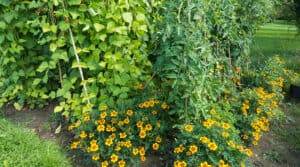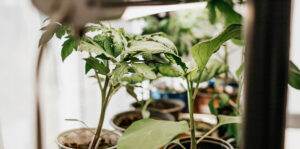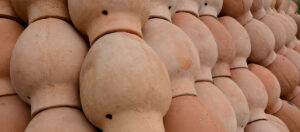
An Insight into the Affordable Traditional Seed-Saving Techniques
Our tiniest effort of saving seeds has a powerful impact on our past, present and future! The practice of seed saving is both crucial and rewarding when it comes to growing your own food and working with rather than against nature.
I’ll say it’s easy to start with basic seed saving at home with minimum equipment and once you dive into the history of species and their respective seed-saving techniques, their evolution and impact, you can absolutely get smitten by it.
Why Save Seeds When They Are Available Easily?
Even though seeds are easily available in the market, both online and offline it is important to remember that seeds saved locally empower us to preserve biodiversity and become self-sufficient by ensuring a safe & pure supply of seeds.
They help build relationships as they encourage community participation and sharing, build steady supplies and preserve cultures.
And with the high cost of synthetic pesticides, and their side effects on our ecosystems and food it becomes important to continue practicing and preserving these affordable techniques and dive deeper into the science behind these practices to reduce the damage and make seed saving accessible and affordable to all.
Today, on a larger scale, very few high-yielding seeds are encouraged in the market with a reduced focus on preserving biodiversity thus we have fewer varieties as compared to the diverse species grown traditionally which have a history of supporting nutrition requirements and supporting local ecosystems.
Most importantly, seeds are our oldest information banks, they store information about their surroundings that lets the plant select traits that will help them survive the changing patterns and predict upcoming ones. This helps preserve the specific type of plants through uncertainties and thus helps distribute and mitigate risks making it possible to stay prepared for disasters and climate change.
When we grow and save a diverse pool of seeds in their farms and gardens, in times of crisis, even if the majority of the species suffer, there will still be some that will survive and support us.
What makes Traditional Seed Saving Methods Affordable?
Evolved around generations of improvising, the traditional methods include locally available environment-friendly materials and catching and storing a seasonal abundance of resources and energy by observing and interacting with ecosystems. This makes the methods affordable and available to everyone.
For example, the mat bins that are sealed with mud and cow dung for storing legumes and millet seeds are stuffed with leaves of antibacterial and antifungal properties rich leaves like Neem, Butea monosperma, Bay Leaf, Soapnut leaves and others depending on the location and which plant is available.
Getting Started With Seed Saving
Starting with the basics like collecting dry seeds, separating the chaff and storing them with labels and dates is an easy and fun activity to do. Understanding the right seed saving time for different plants is a slow and steady process that comes with observation, interaction and patience.
Some plants have dry seeds and some have wet seeds however the basics of seed saving come from letting the seeds mature such that they are hard enough to withstand the extraction process like threshing to allow the attached plant material to shatter and separate away from the seeds.
If you have figured out the plants for saving seeds, the next step is to wait for the best fruit to mature on the plant. Post which based on volume and plant type, proceed with harvesting and separating the fruit or seed from the plants.
For most vegetable seeds like gourds, okra, chilies and seasonal flowers, one can simply collect the mature dry fruit and remove the seeds. For slightly larger batches of grains, legumes, or millets, separation can be done simply by crushing the mature fruits and pods by hand and removing the seeds one at a time for lesser quality.
For bulk quantities threshing is a suitable technique, you can begin by harvesting the plants or branches and threshing them with wooden sticks to separate the fruit. Post which winnowing helps separate the chaff and healthy mature seeds.
Traditional Seed-Saving Practices
There are diverse traditional seed-saving methods practiced across the globe and here’s my attempt of sharing some of the common traditional seed-saving techniques I have experienced and learned from India. These techniques have also evolved around local seasons and thus they differ slightly as we move across location and elevation.
From quick ones to some that require time and patience, a mix that I hope will add value to your existing seed-saving practices.
Sun Drying
More than being a method, Sun drying is the first step to seed storage as it helps reduce moisture content which is one of the prevailing factors in spoilage due to mold, fungal infections and pests. It’s simple and can be done by different methods like simply showing sun to seeds by spreading thin layers in a tray, plates or in a solar dryer.

Across different geographies with different seasonal winds and availability of sun, it can be observed that specific periods are reserved for sun drying when the sun availability is optimal and humidity is low. The seeds are aimed at drying to 8-10% moisture level for reducing spoilage due to rotting and pests.
This alone is sufficient for some seeds like legumes, millets, gourds and more under certain weather conditions and if necessary, is followed by other seed-saving methods.
Mixing
Mixing is a simple technique, great for beginners working with common seeds like legumes, vegetables, grains or millet.
It continues to be one of the most common methods as it can be done with basic materials and implemented quickly. It involves mixing ingredients with seeds that have properties like moisture reduction, pest repelling, insecticidal and more. Mixing of ingredients is basic for other seed-saving techniques where they are either sealed, stored in gunny bags and straw or hung.
Below are some of the common traditional mixing ingredients and methods:
1. Salt
Salt is used in both saving seeds as well as checking the moisture content of seeds before saving.
Sea salt is either used directly by mixing the crystals or treating seeds with salt water. For treatment with salt water, a solution of salt and water is created by dissolving salt in water until the solution reaches equilibrium, then the seeds are poured into the water, removed immediately and sundried. This can be done for both tiny batches as well as large batches.
For checking the moisture content, simply take a dry jar, add seeds and fine salt. Shake it well and check whether the salts stay separate and dry or stick to the seeds, if it sticks then the seeds have considerable moisture and need more drying before storage.
2. Neem (Azadirachta indica)
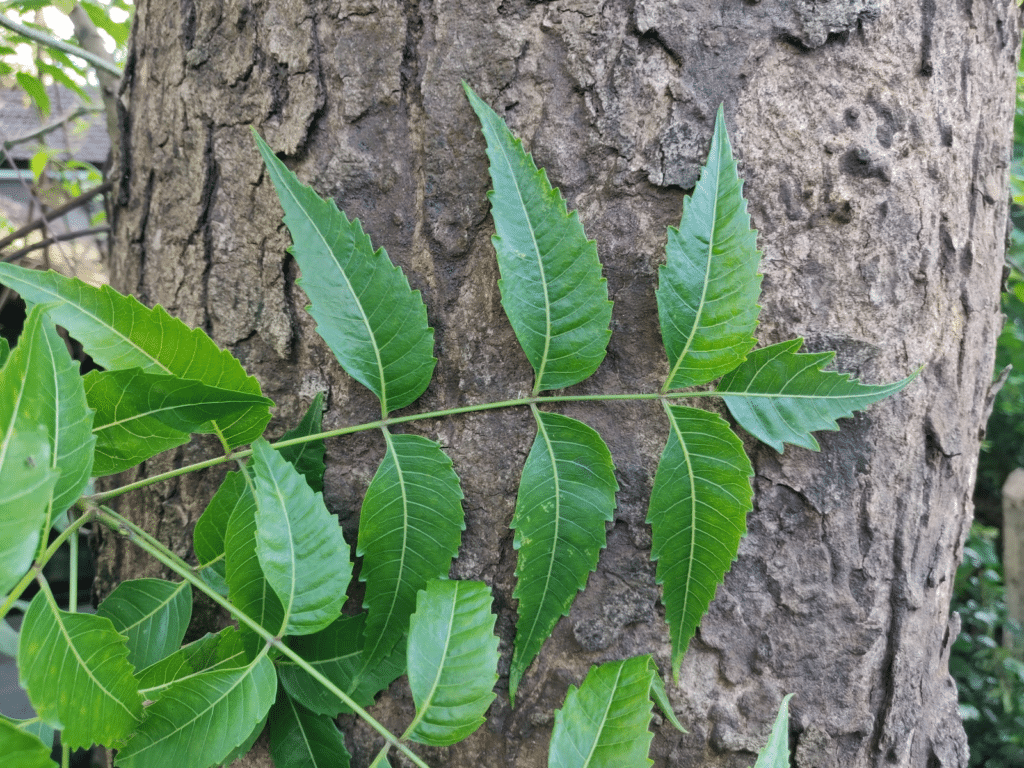
Different parts of neem like leaf, bark, wood and fruits have been used as a biological pest management agent for ages due to the presence of the principal active compound, Azadirachtin. The compound doesn’t kill pests however repels by disrupting growth, metamorphosis and reproduction as the pest avoids the seeds treated or mixed with neem or stops eating again due to the effects on their systems.
There are diverse techniques of mixing neem or neem extracts like neem leaf powder, and neem seed kernel oils. Mature Neem leaves are simply thrown in grains every now and then during storage. Neem has been successfully used to repel and manage more than 300 species of pests like leaf miners, grasshoppers, beetle larvae, caterpillars, centipedes, millipedes, mites, and nematodes.
Quick Tip: If you don’t have access to neem trees and still wish to incorporate them, you can simply buy neem leaf supplements from ayurvedic stores near you, it’s in powder or capsule form, you can simply break them and mix it with seeds. However, I would always recommend harvesting leaves locally and using them or figuring out alternative methods.
3. Soapnut Leaf
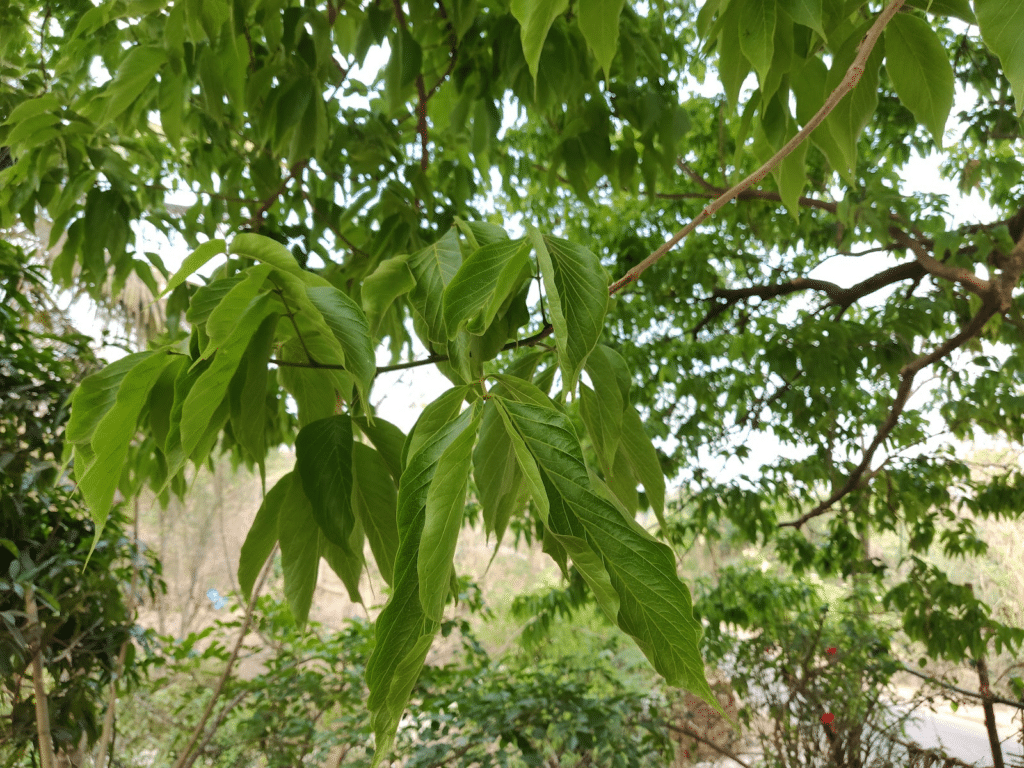
Soapnut leaves are integrated in a similar way as that of Neem to repel pests, they are also used as pesticides. You can simply pluck mature leaves shade dry and mix them with seeds while storing them.
4. Tejpatta (Cinnamomum tamala)

Tejpatta has antibacterial, insecticide, and larvicidal properties. It is known for repelling pests in rice and it is even found effective to repel cockroaches. You can easily find them at local spice stores. Here in India, they are available in abundance as the tree is native and is grown intensively as a spice and windbreak.
The leaves are mixed with rice for both seeds and for storing dehulled rice.
Interesting fact: Simply placing Cinnamomum tamala leaves in cabinets, shelves or on the kitchen countertop repels roaches and is a great non-toxic alternative compared to over-the-counter pest repellents.
5. Asafoetida

Commonly known as Hing, its strong smell repels pests. It is mixed by crushing or grinding into powder and mixed with seeds or the blocks are simply placed in seed-saving containers.
The blocks are roughly 1 to 2 inches cubes, one block is enough for half a kg of seeds.
Note: The powdered Asafoetida powder available in the market is mixed with flour as concentrated Asafoetida blocks are strong and need to be used in very little quantities. As the powder contains flour it is not recommended to use it for seed saving and use the concentrated blocks instead.
6. Tetepati/Mugwort (Artemisia vulgaris)
As soon as you pluck a mugwort leaf, you will know why it has been preferred as a go-to pest repellent for ages in Asia and it is native to Asia and North America. It is a medicinal plant with a strong camphoraceous smell due to its volatile green oils that make it a great repellent to be added to seeds and storage of food in general. It has strong antibacterial and antifungal properties.
The leaves can be added directly to seeds while storing them in containers. The essential oil can be used as well by slightly mixing it with seeds.
7. Castor Oil
Castor oil is rubbed on seeds before storage, the oils have both insecticidal properties and pest repelling properties. The Oil is extracted from the seeds of the castor plant. The oil is rubbed on the palms and the seeds are then rubbed by hands repeatedly until a very thin layer of castor oil is visible on the seeds.
8. Dry Fenugreek Straw
It is a common practice to dry, chop and store the fenugreek straw for seed saving, around a kg of the chopped material is used for 10kg seeds. It’s simply mixed in the seeds, the smell of fenugreek repels pests and reduces the damage.
Sealing / Plastering the storage structure
This method includes storing seeds inside pockets or pots made of natural materials like cob, cow dung, cane and more. There are different sealing and plastering techniques, from making whole pots out of the soil and cow dung on a cane or straw skeleton to sealing the mouths of terracotta pots with soil and dung. It is preferred mostly for seeds of legumes, millets and grains.
Different seeds are stored with different seeds based on properties and sowing patterns. For example, in Telangana, legumes like moth moong are stored with millets like pearl millets and finger millets.
Sealing pots
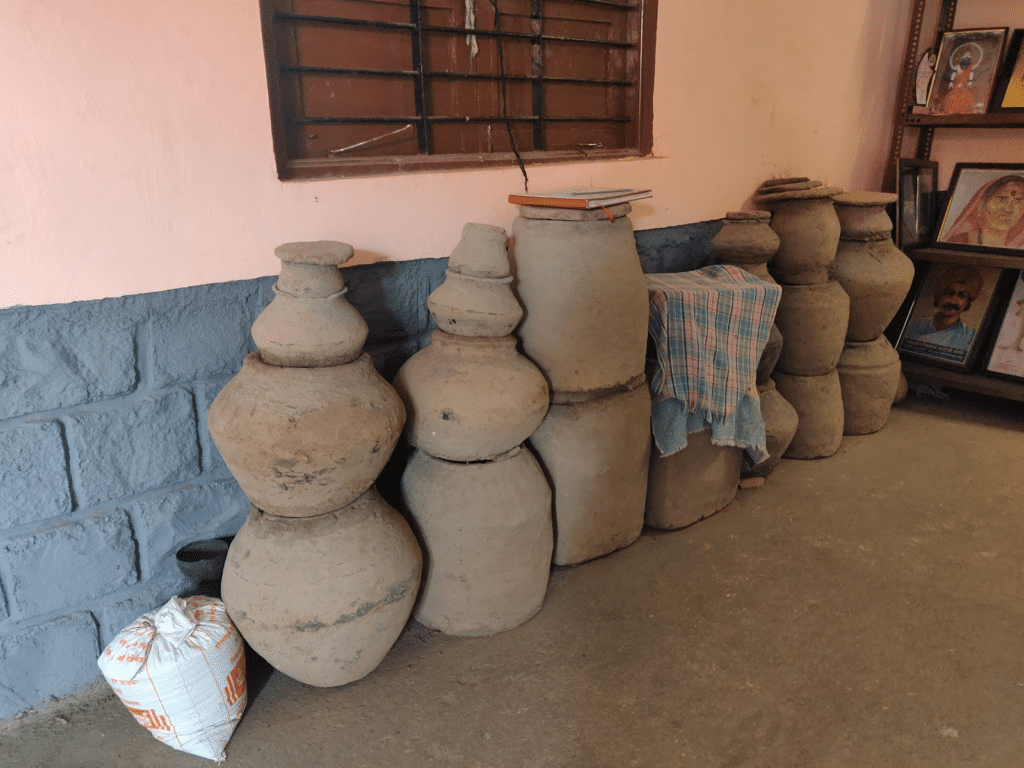
Baked terracotta pots are cleaned and dried properly, then filled with seeds, mixed with pest-repellent and moisture absorbers like neem leaves and ash and then sealed with cow dung, mud and straw plaster. They are sun-dried and are stored in dry places.
The pots are used to store seeds like pigeon peas, moth beans, moong beans and other beans.
Sealing Baskets
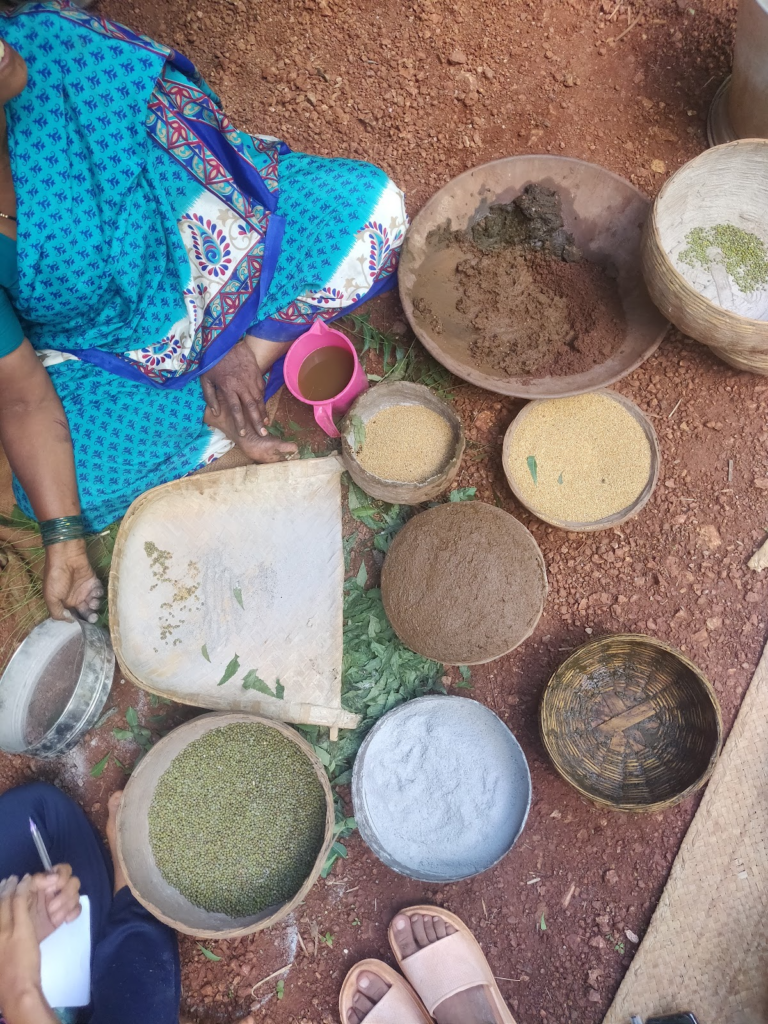
The core of the method involves sealing baskets with mud and cow dung to prevent pests and moisture. These baskets are dried and stored in dry places. The baskets are plastered with the mud and cow dung mixture, dried and then filled with selected seeds post which is topped with straw or pest-repellent leaves and straw like that of neem, soapnut, fenugreek and then plastered with the mixture again on the top and allow to dry.
Traditional Recipe:
Ingredients: Ash, Neem leaves, Terracotta Pot, Cowdung, Mud, Seeds and Straw (Optional)
- Seal the basket with cow dung and mud, and let it dry completely in a warm airy place.
- Layer the basket with neem leaves, and seeds and sprinkle some ash in between, keep sandwiching until 80% full.
- Put a heavy neem leaf layer at the top and seal the top with a mixture of mud and cow dung.
- Dry in the sun, and store in a dry area.
Tip: The empty space at the top can also be sealed with wheat straw, it is excellent at managing pests as it creates heat at the entrance.
Hanging

Hanging is one of the simplest methods used for saving specific seeds like maize, onions, garlic, gourds and more. It helps keep the seeds up high from the ground and sometimes in the presence of smoke near the wood stove or traditional ovens which helps keep pests at bay, avoiding moisture and ensuring proper ventilation.
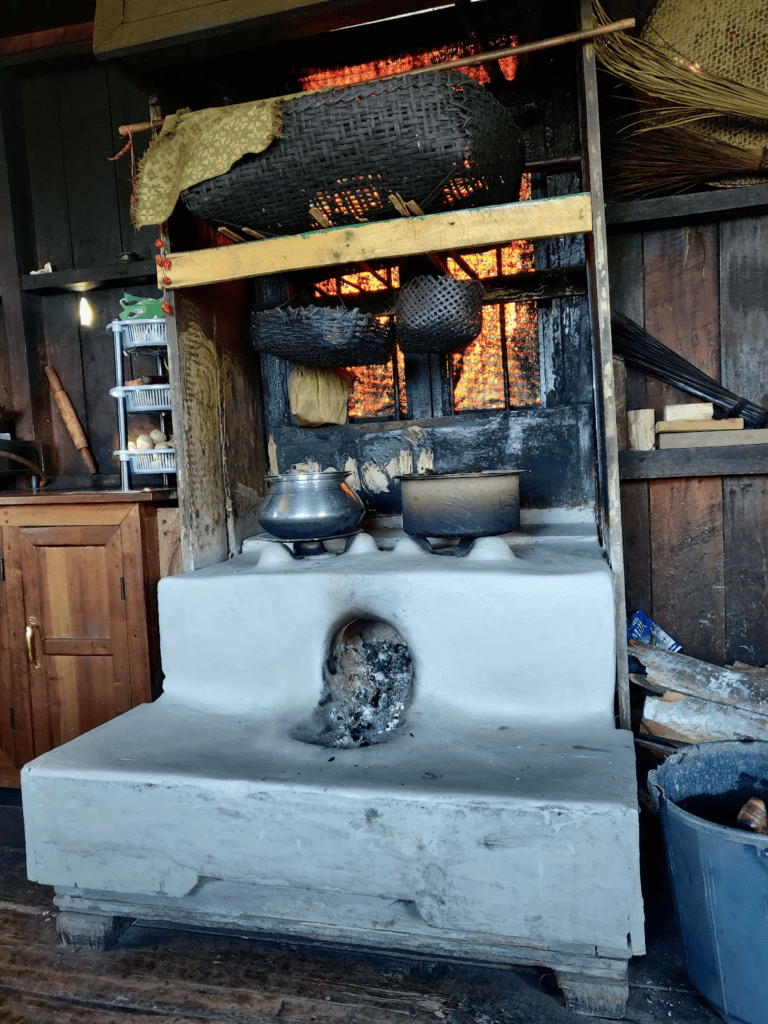
It’s a common practice to place seeds or whole fruits in a hanging basket above the traditional fireplaces. This method can be seen used frequently for corn.
This is easy and we can find a similar spot in our homes or kitchen to experiment with saving seeds. It is recommended to create seed-saving structures at least a foot away from walls and more than a foot above the ground.

Heap Storage & Ventilated packing
These methods are breathable which allows the seeds to stay ventilated as per need and in darkness, like storing in jute sacks, straw heaps and baskets, straw rolls and braids that create heat that repels pests.
Straw heaps hung at the false ceiling are used for storing tubers and rhizomes like air potato (Dioscorea bulbifera), turmeric, taro, Dioscorea alata and more.
Jute bags are filled with wheat straw and Palash leaves (Butea monosperma) are stored in underground storage pits called “Khatti” or “Khassa”. These pits are dedicated storage rooms where both grains are stored for both food and seeds. They range from 10 to 15 ft deep and 5 to 20 ft wide. When storing seeds, the entire pit is covered with 1 to 1.5 ft of straw and palash leaves on all four sides.
Palash (Butea monosperma)
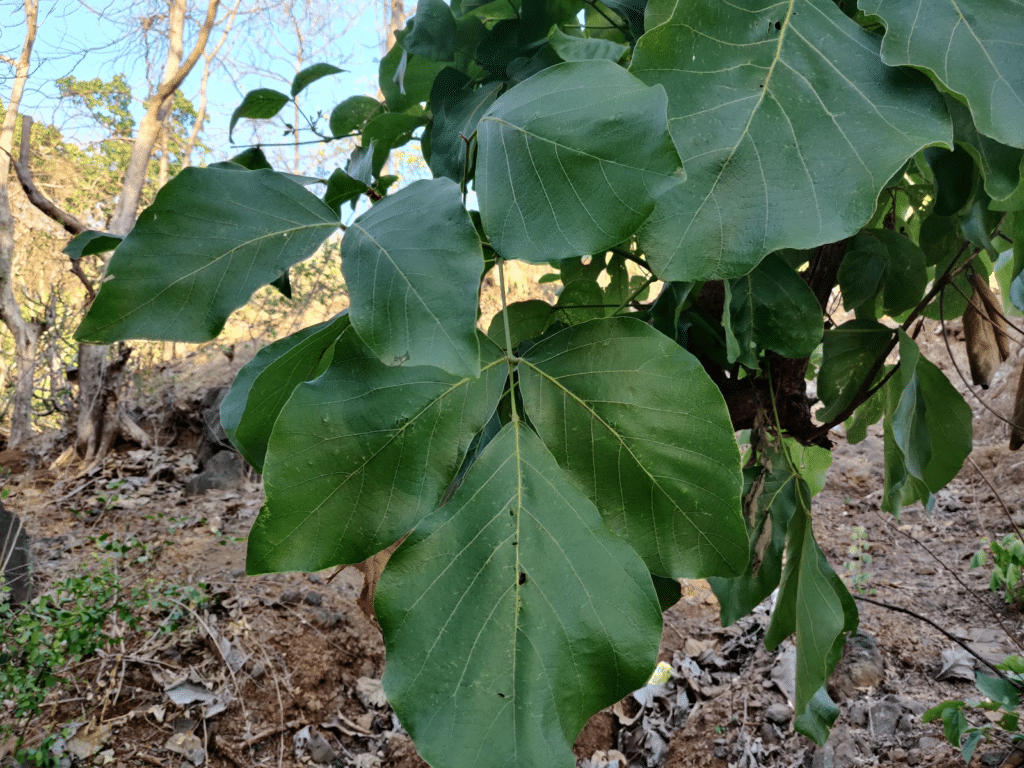
Conclusion
Though different methods have evolved around the detailed observation of local climate patterns and plant behavior, the basics are as simple as reducing seed moisture and storing seeds in a dry, damp-proof environment with well-maintained sanitation.
It’s easy to begin with, it’s empowering and even a little seed saving is a powerful thing to do.
References:
- Wang J, Zhu F, Zhou XM, Niu CY, and Lei CL (2006). Repellent and fumigant activity of essential oil from Artemisia vulgaris to Tribolium castaneum (Herbst) (Coleoptera: Tenebrionidae). Retrieved from https://www.sciencedirect.com/science/article/abs/pii/S0022474X05000548
- Richa R, Omre P, and Shukla, R (2015). Traditional seed processing and storage: A need to retain minimum crop diversity in India. Retrieved from https://www.researchgate.net/publication/341661102_Traditional_seed_processing_and_storage_A_need_to_retain_minimum_crop_diversity_in_India


